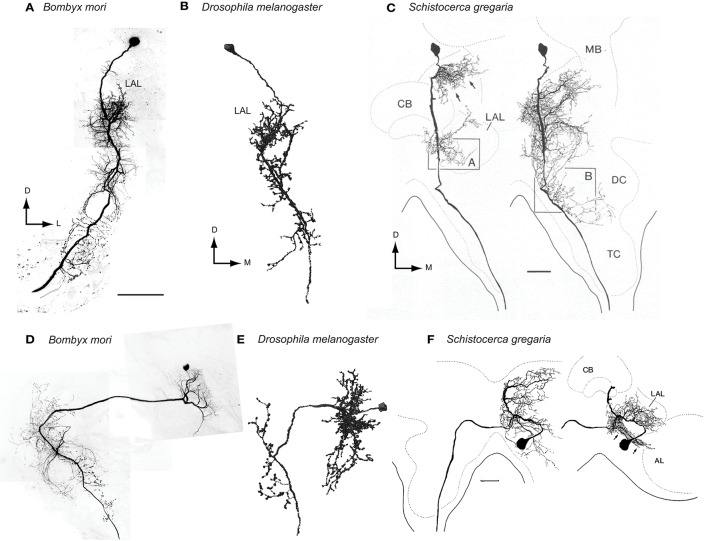Figure 6.
Comparison of neuronal morphology of the LAL bilateral neurons across species. (A) Ipsilateral LAL DN of the silkmoth, Bombyx mori (Mishima and Kanzaki, 1999). (B) Ipsilateral LAL DN of the fruit fly Drosophila melanogaster (VGlut-F-200356, FlyCircuit Database; Chiang et al., 2011). The neuron has smooth processes in the ipsilateral LAL, vest, wedge and superior posterior slope and descend the ipsilateral neck connective. (C) Ipsilateral LAL DN of the desert locust, Schistocerca gregaria (Homberg, 1994). (D) Bilateral LAL DN of the silkmoth, Bombyx mori (Mishima and Kanzaki, 1999). (E) Bilateral LAL DN of the fruit fly Drosophila melanogaster (VGlut-F-500726, FlyCircuit Database; Chiang et al., 2011). This neuron has smooth processes in the ipsilateral LAL, epaulete, vest, inferior posterior slope and superior posterior slope and varicose processes in the contral lateral vest, inferior posterior slope and superior posterior slope. (F) Bilateral LAL DN of the desert locust, Schistocerca gregaria (Homberg, 1994). Scale bars = 100 μm. AL, antennal lobe; CB, central body; DC, deep deutocerebrum; LAL, lateral accessory lobe; M, medial; MB, mushroom body; TC, tritocerebrum.

